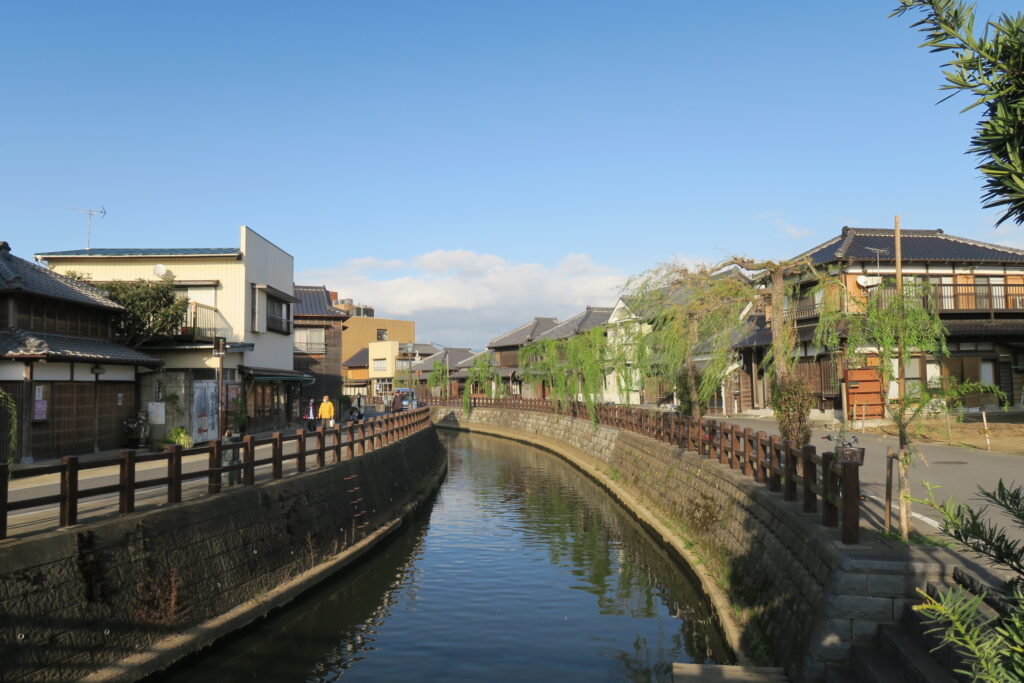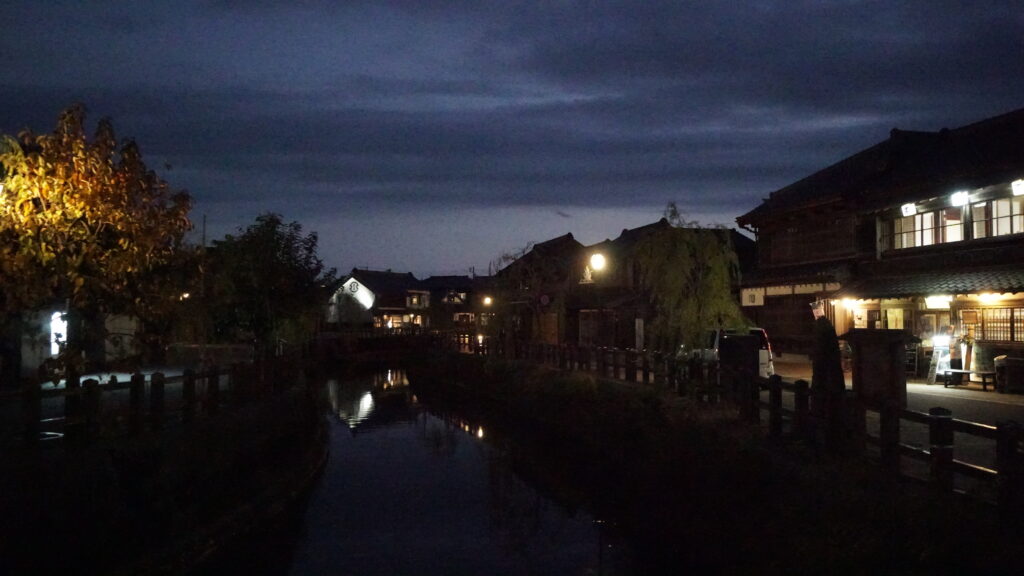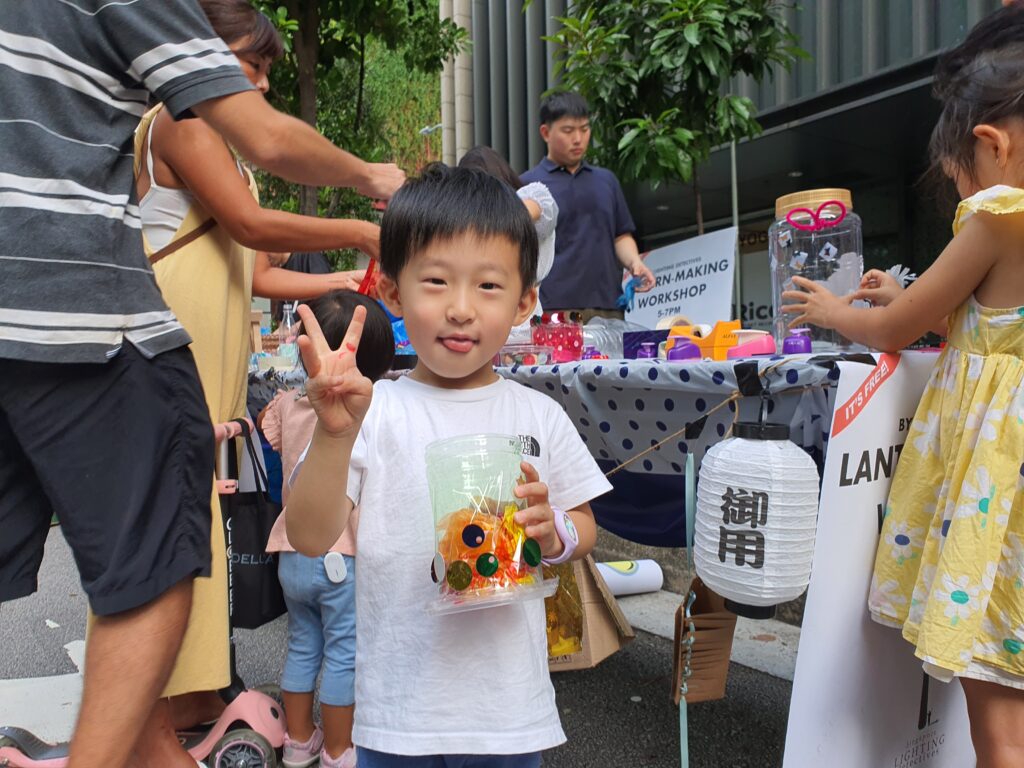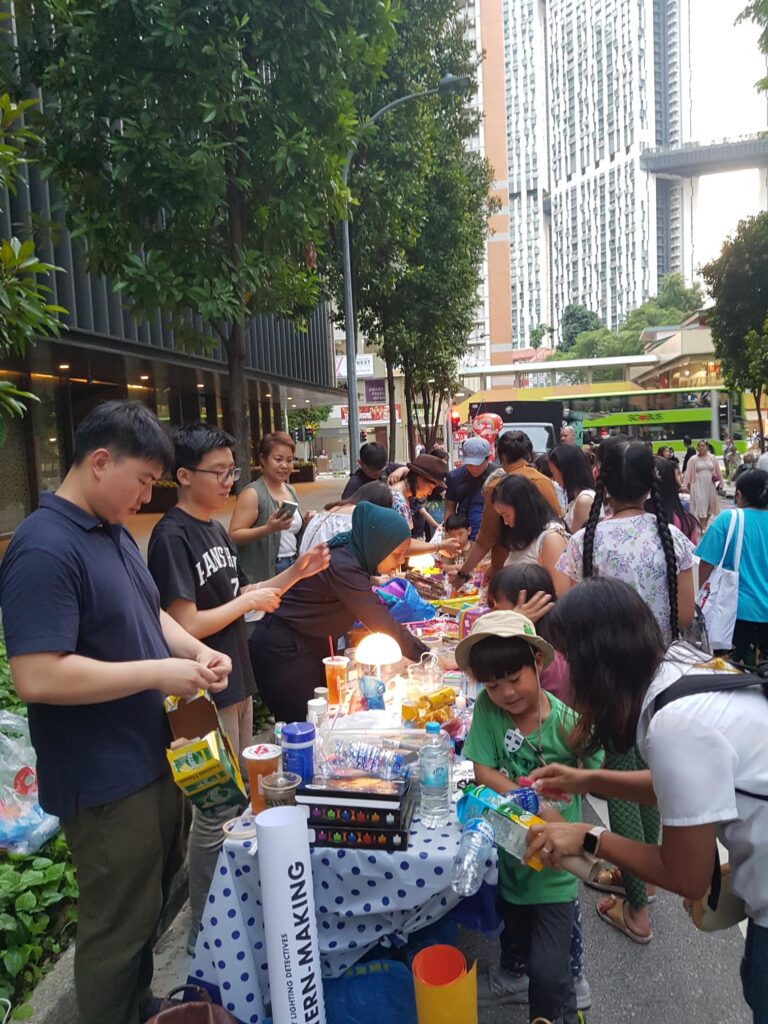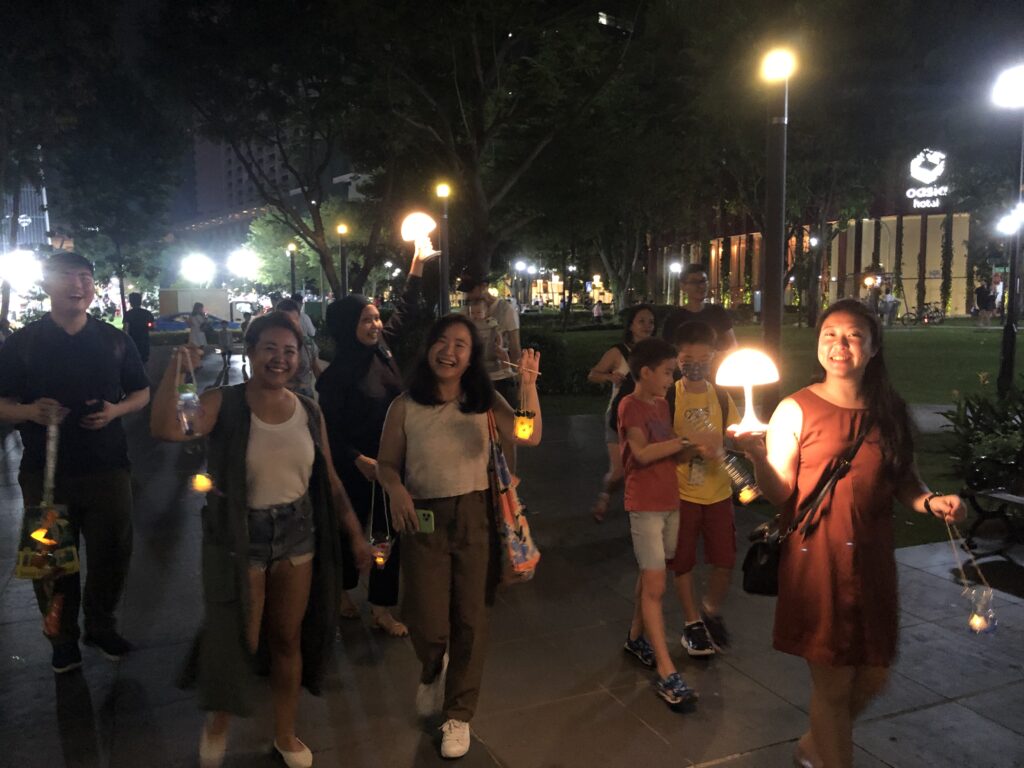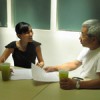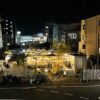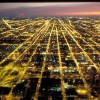Date of Issue: December 02, 2022
・Activity 1/ City Night Survey : Sawara District, Katori, Chiba (2022.11.4-5)
・Activity 2/ Mid-Autumn Lantern Workshop (2022.09.10 & 2022.09.23)
City Night Survey : Sawara District, Katori, Chiba
2022.11.4-5 Sachiko Segawa
Surprisingly, this survey of the Sawara district marks the first time the Lighting Detectives have conducted an investigation within Chiba Prefecture. The team focused on an area designated both as an Important Preservation District for Groups of Traditional Buildings and as a Landscape Formation District. Here, the townscape of merchant houses, which flourished from the Edo period thanks to river transport on the Tone River, still remains.
Located about 70 km from Tokyo Station and slightly inland from the Tone River, the Sawara district of Katori City once thrived as a merchant town, to the point it was said to rival Edo itself. However, the town declined during Japan’s period of rapid economic growth. Following a townscape survey in 1974, the value of its historic scenery was reappraised. Today, leveraging its convenient location—just two hours from Tokyo and one hour by train from Narita Airport—the area is being redeveloped as a tourist destination. For this survey, the team limited their scope to the townscape along the Ono River and conducted a nightscape survey.
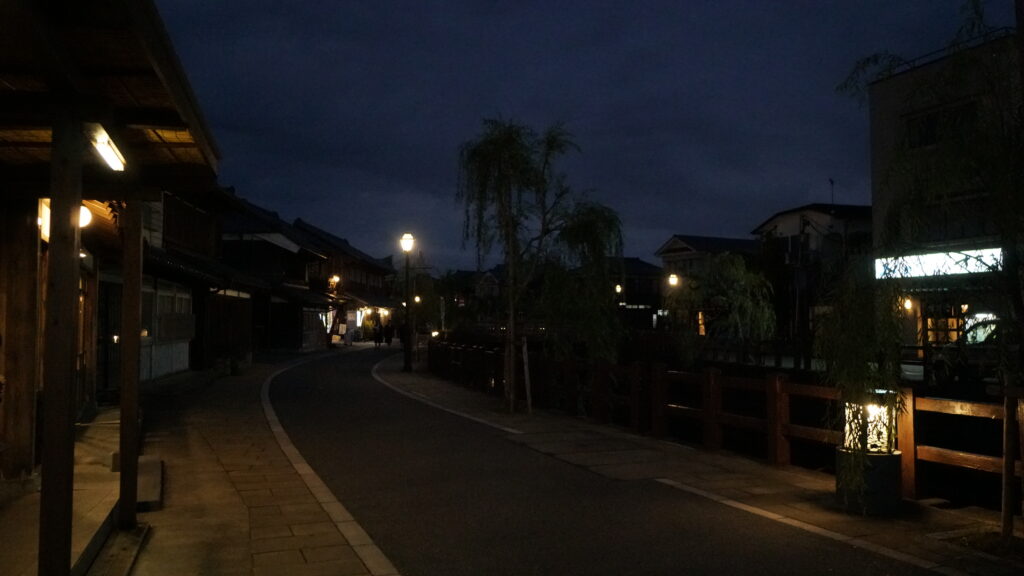
■Uniquely Designed Lighting Fixtures
From JR Narita Line Sawara Station, as we walked toward the Ono River, we were greeted by a bollard topped with a monkey. “Why a monkey…?” we wondered, but as we continued upstream along the river, we encountered bollards adorned with all sorts of figures: rabbits, carp, children, frogs, Ebisu, and more—each one different, with no two alike.
These uniquely designed bollards seem to be modeled after the floats (dashi) that are paraded through town during the “Sawara Grand Festival” (Sawara no Taisai). The floats of the Sawara district consist of a roughly 4-meter-high base topped with an approximately 4-meter-tall sculpture. The festival is designated as UNESCO Intangible Cultural Heritage and is counted among the three great festivals of the Kanto region.
The streets along the river have been cleared of utility poles, creating a tidy townscape. Interestingly, this removal of power lines was not only for aesthetic reasons but also to ensure that the festival floats, which reach about 8 to 9 meters in height, can be pulled through the streets without obstruction.
Even the streetlights installed along the river feature figures of people pulling the floats, showing just how much pride the local community takes in them. At the Suigo Sawara Dashi Kaikan (Sawara Float Museum), we were able to watch videos of the festival and see two actual floats on display—their scale and craftsmanship were truly overwhelming.
■Subdued Nights in Sawara
At night, almost no tourists could be seen, leaving only the light from a handful of riverside restaurants and hotels, the bollards decorated with various ornaments, and the glow of the streetlights. Although the riverside road is not very wide at 5.4 meters, there was surprisingly frequent car traffic, which made it clear that this street serves not only tourists but also as a road for local residents.
The bollards and streetlights were arranged in various ways—sometimes alternating, sometimes only bollards—with intervals of roughly 20 meters. The illumination dropped to less than 1 lux at about 3 meters from a bollard or 7 meters from a streetlight. To be honest, it felt a little dark. However, contrary to my initial expectations, the overall atmosphere was consistently warm, with light sources—whether from the lamps, restaurants, or homes—falling mostly in the 2700K–3000K range, which matched well with the townscape of Sawara and never felt unpleasant.
That said, despite the presence of luxury hotels housed in old merchant buildings, as well as delicious Italian and fine French restaurants, the riverside nighttime scenery did not seem to be fully utilized. In some places, warm vertical light spilled pleasantly through the lattice windows of old houses, but I felt there was still untapped potential for creating a more attractive nightscape—one that would encourage not only locals but also hotel and restaurant guests to want to stroll along the river after dark.
■Hopes for the Future of the Sawara District
Although inbound tourism demand plummeted during the COVID-19 pandemic, restrictions are now gradually being eased. Given Sawara’s close proximity to Narita Airport, I believe that if the nightscape were further enhanced, this district could become an even more attractive destination not only for tourists but also for local residents. (Sachiko Segawa)
Mid-Autumn Lantern Workshop
2022.09.10 Singapore Lighting Detectives
After 2 years of being quiet during the Mid-Autumn Festival, we were able to finally participate in the community event organised by the local grassroot committee of Tanjong Pagar.
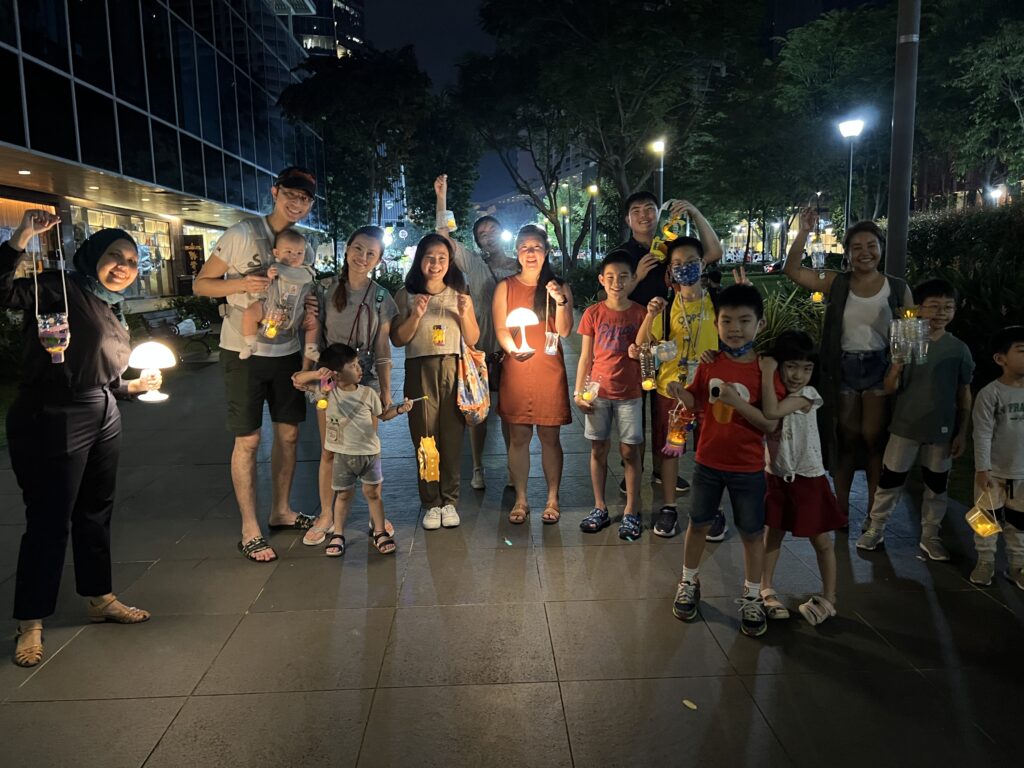
We held a lantern-making workshop in the early evening of Saturday, 10 September 2022 in conjunction with the Mid-Autumn Festival. The festivities were organised by a place-making committee Discover Tanjong Pagar overseeing the businesses and people of the district. The theme was “upcycling” and we were limited to the use of recycled materials for the activity. It was tough to collect items like plastic bottles, cardboard boxes and bottle caps 2 weeks before the event to gather enough for around 50pax estimated to turn up. We had assistance from the organiser to obtain tables for our workshop and some recycled bottles.
A celebration of mooncakes, tea and lantern walks are
commonly seen around the residential neighbourhoods as
part of the festivities. There were snack stalls and live music
flanking our workshop tables to draw the crowd that was
out with their kids.
The turnout was weak at the start, around 5pm in the evening.
However as it turned to nighttime, the numbers surged
and we were overwhelmed until our scheduled walk at 8.30pm.
The children ranged from toddlers of 18 months old to adults, with most around 6-10 years old. They had to be supervised by Lighting Detectives volunteers as there was a lot of use of scissors and penknives to create shapes out of the boxes and cardboard.
Parents were very helpful and assisted to ensure safety. The kids were very enthusiastic and excited to end with the a
walk led by our volunteers! All-in-all it was a short but successful event.
(Sherri Goh)





